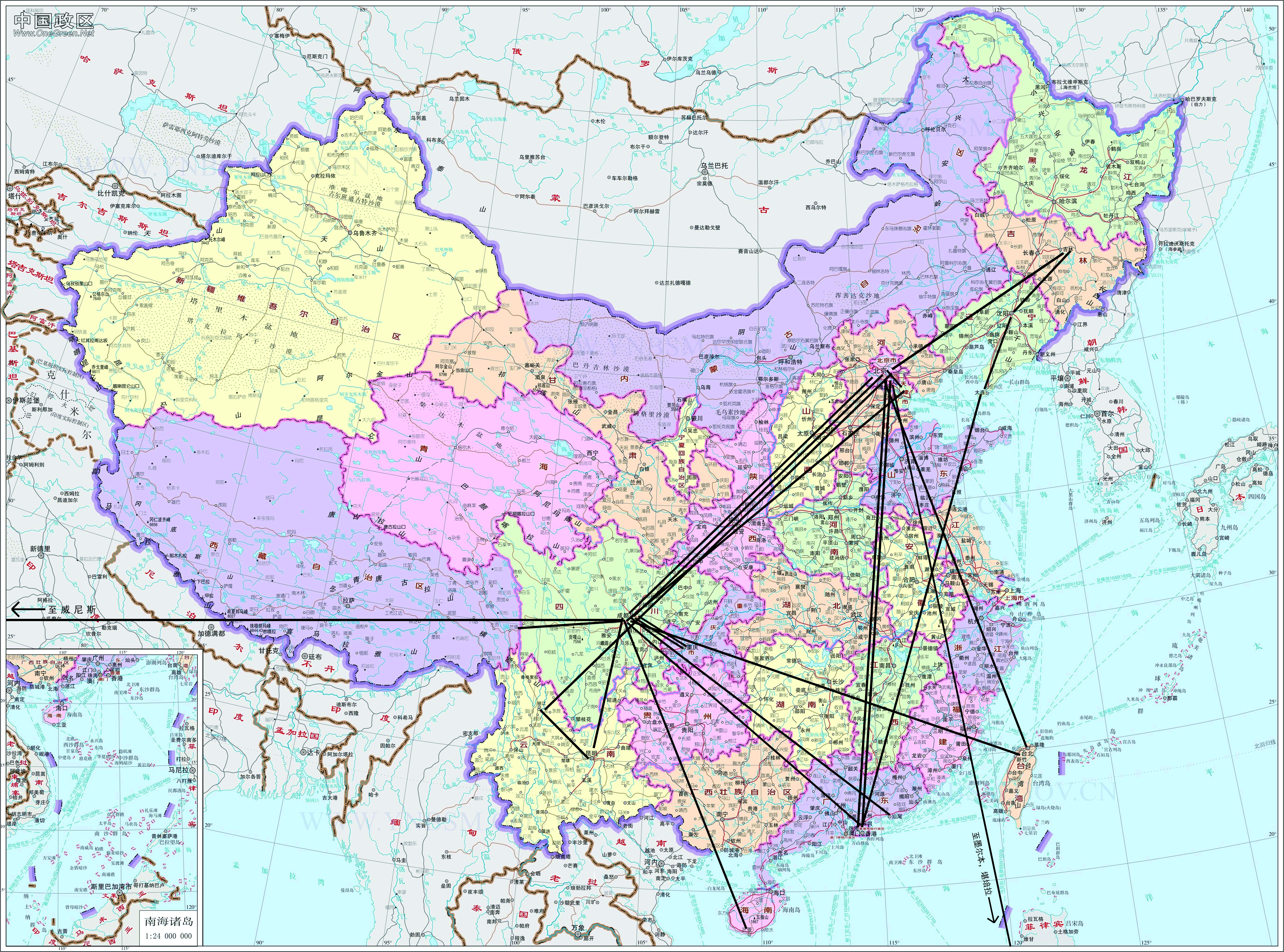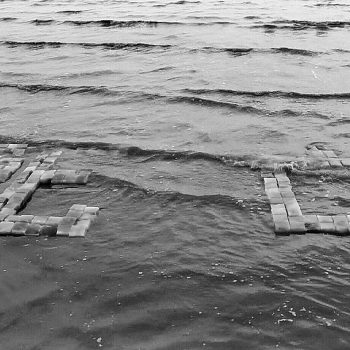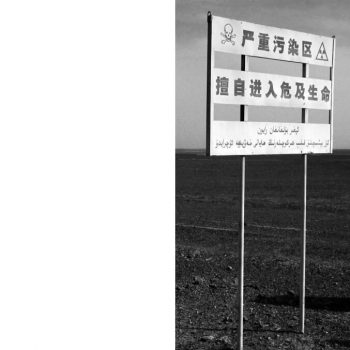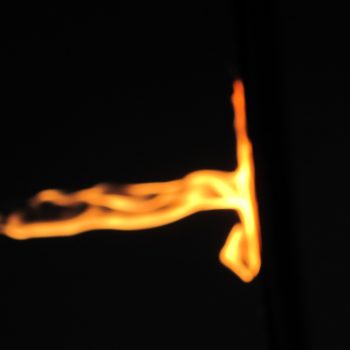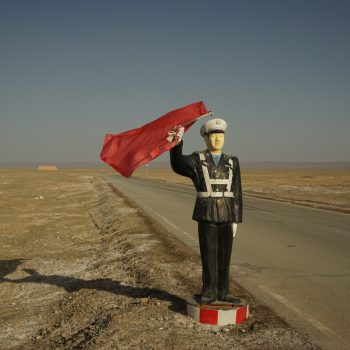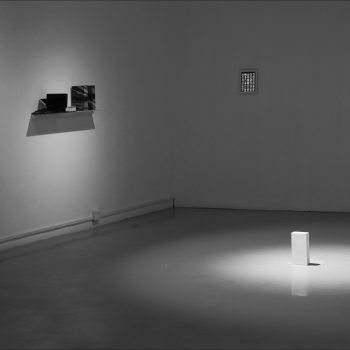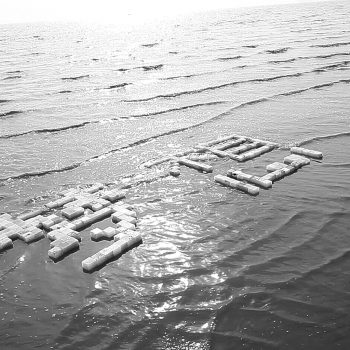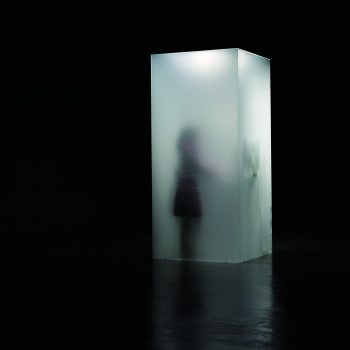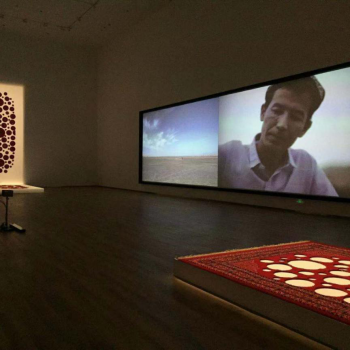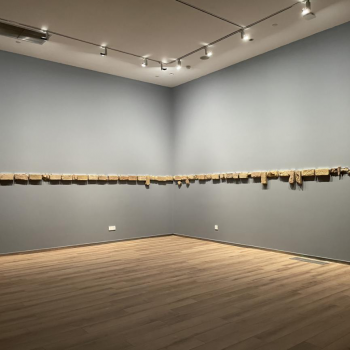Dialogue between Du Xiyun and Li Yongzheng—A Brick’s Journey
Time:Feb 19 to Apr 4, 2014 / Platform:WeChat
D : Why do you engage in art while doing business?
L : I was looking for something to do after work, like others do with dancing, singing, or playing mahjong. Art felt so far away. I’d been producing for a long time, but I felt disconnected from the art circle, and didn’t exhibit.
D : What kind of fun does art bring to you?
L : It’s not fun or un-fun. The way I see it, art is natural, as it should be.
D : Over the years, has your artistic attention shifted? How about your methodology?
L : There haven’t been many changes, just the reality I encounter, which proliferates in the inner mind like wild weeds. I used to shoot for making contemporary art, or being easily understood as contemporary. Now I no longer care. How can you define what’s actually only just happening? Whether or not it’s contemporary art, or even art, is not so important anymore. I don’t really have a methodology. Anything by any means possible.
D : Does the reality that you have encountered give you a sense of safety?
L : Danger from reality is real; I could feel it since early on. Nevertheless, more sentimental reactions are nervous reactions. I have to get used to that. There is no once-and-for-all solution. That’s what makes life fun.
D : What issues are you interested in now?
L : A lot, for instance the impact of cloud computing and big data on real life, whether or not 4G and 5G will overturn Internet usage habits, or whether or not the emergence of a virtual community can lead to decline of sovereign nations. There’s also the relationship between quantum physics and Buddhism, whether or not anti-corruption without guaranteed legal rule will lead to more rampant absolute power, and then there’s this year’s housing price trend. Of course there are things that come up every day, which I try and handle with as much efficacy as possible.
D : How do you consider the relation between thinking, artistic expression, and real action?
L : Thinking passes time. There’s no need to waste time getting worked up. I don’t think about artistic expression. All expressions can be art. Expression is real action.
D : Thinking and action are different, action is indescribable. What do you think?
L : Knowing and doing should go hand in hand as much as possible. If you just talk, do and believe superficially, then all your thoughts arise outside of you. A lot of people strategize without moving forward. This’ll come back to bite them.
D : Can you talk about what’s happening these days?
L : For A4 Gallery’s 2013 Second Young Artists Experimental Season Exhibition, which you curated, I created Send for You. It used an old printing machine with which I printed old Xinhua Daily issues, originally published in the 1940’s KMT-ruled areas. Many articles talked about freedom and democracy, prompting many youths at that time to fight and even sacrifice their lives.
(from last para) These propositions are sensitive topics in society today. Jonathan Spence spoke of Sun Yat-sen, saying, “Many revolutionaries, either on paper or before the revolution’s success, would talk about democracy, freedom, and constitutional government. But really, the same peson will skillfully eventually use any means, even autocracy, dictatorship, or intolerance.” Whether it’s an individual or a group, if knowledge is always used as some kind of strategy, then all these ideals drift past like floating clouds, poisoning present reality.
(from last para) Even if we aren’t talking about magnificent or past things, when we do things today, we have to be familiar with corresponding implicit rules. On many occasions these things will run contrary to a person’s values. We usually talk about ethics, conscience, fairness, and justice, but in real practice, how many people have really thought it through?
(from last para) I don’t encourage abstract ideals or ethics. I hope the individual can start with himself, can reflect on things he’s learned in order to formulate reliable actions guided through thinking. Thought and action are two sides of a coin. Bring knowing and doing together is a real praxis.
D : But really, why is it that someone will skillfully use any means, even autocracy, dictatorship, or intolerance to get what they want? What are they thinking?
L : There is an old Chinese saying: “Talking eloquently about morality, while thieving and prostituting in private”. We have a tradition of saying one thing but doing something other. Placing oneself at a certain height of morality can both satisfy one’s preference for spiritual cleanness and also help you cheat others. There are big problems in both our tradition and our education. So, apart from the hope for new policy, changes can only be carried out by every individual. You have to set out from your own real circumstances. Depart from trivial things, make efforts, little by little.
D : How do you understand “today’s implicit rules”?
L : Rules that can be clearly explained are no longer implicit rules. A master who understands implicit rules needs experience, intuition and very thick skin.
D : The Wukan Brick was passed from place to place, from person to person. Everyone did something different with it. What do you think of that?
L : The most interesting thing about Wukan Brick is each and every participant’s different attitude towards and treatment of the brick, their interaction with the artwork, and their “recreation” of it. Online, each participant had their own topic to discuss, thus helping sustain the impact of this historical event on the public. That’s enough for me, my view toward the Wukan incident is no longer important.
D : What problems arose in doing Wukan Brick?
L : What happened in Wukan evolved into a public incident, widely discussed on Microblog. I want to join the discussion in my own unique way and the idea of passing something along via Internet was already on my mind before the Wukan Incident. Back then I wanted to pass something useless along, with no value or symbolic meaning. It was just purely for the sake of relay, just like many people use social apps like Microblog and WeChat. The aim is just communication and expression, without trying to pull off something grandiose. In my view, everything on the internet goes through a change. The thing becomes something other than it originally set out to be. This is why I am so interested in changes brought to art by the internet. I don’t believe in an ultimate unchanging beauty, nor do I trust in fundamental or absolute spiritual forms. No one form is superior to another. So-called spirituality can only be manifested in human to human communication, and in encounter with actual things. Perhaps, like this brick.
D : So when you sent this brick out, did you ever expect to see it again?
L : That’s right, I have no way to control how someone interacts with this brick, or disposes of it. Nevertheless, when I sent it to the first person, I attached three conditions. He had to send it to the next person, with these same instructions; and he couldn’t destroy the brick.
D : Has anyone broken the rules?
L : Kind of, but I don’t really mind. This brick has its own fate. For instance, it got put into an electric kiln and baked for 16 days, breaking it up. Later it got repaired by others using traditional Chinese methods involving ceramic repair. Everyone who got the brick did something different with it. I don’t want to mess with that.
D : What if someone totally destroys it or throws it away?
L : Either nonexistence or destruction is also a kind of end.
D : How do this brick’s encounters reflect current views on democracy?
L : In fact under the overwhelming authority of ear-splitting mainstream discourse, an individual’s voice is often unheard. It would be better to practice what you preach, stay away from trivial things, and work hard to realize your values. Magnificence is only realized in action.
D : Are you prepared to enter the exhibition and sales scene now?
L : Brick Relay was suspended in June 2013, and one reason was to attend a Venice exhibition. Of course, if this piece of work can be sold or collected in a museum, I personally have no problem with that. But really, this piece of work is jointly created by all its participants. Any discussion related to it on the web will be regarded as a part of this work, therefore it is necessary to solicit the opinions of all deliverers on whether or not to sell it, as well as how to distribute or dispose of the sales proceeds.
D : Mobile internet represents earth-shaking revolution in technology. In your view what new possibilities will it present to art?
L : People began 20 years ago discussing the impact of internet on enterprises. Back then there was the idea that all enterprises would become internet enterprises, and as it turned out, this statement is correct. Looking at enterprises with competitiveness today, either they are enterprises that display an existent entity in a digital way, or they are brand-new enterprises with manufacture, management and sales established through digital upgrading. In my view, the impact of mobile internet on contemporary artists will also resemble the impact of internet on enterprises. There will be more instances of a kind of virtual artform that purely exists in mobile internet. Traditional forms in contemporary art will inevitably rely on mobile internet as their main medium for communication and exchange.
D : Mobile Internet represents earth-shaking revolution in technology, in your view what new possibilities will be presented to art against such background?
L : 20 years ago, people began to discuss the impact of internet on enterprises, back then there was a view that all unheard. It would be better to practice what you preach, stay away from trivial things, and work hard to realize your values. Magnificence is only realized in action.
D : Are you prepared to enter the exhibition and sales scene now?
L : Brick Relay was suspended in June 2013, and one reason was to attend a Venice exhibition. Of course, if this piece of work can be sold or collected in a museum, I personally have no problem with that. But really, this piece of work is jointly created by all its participants. Any discussion related to it on the web will be regarded as a part of this work, therefore it is necessary to solicit the opinions of all deliverers on whether or not to sell it, as well as how to distribute or dispose of the sales proceeds.
D : Mobile internet represents earth-shaking revolution in technology. In your view what new possibilities will it present to art?
L : People began 20 years ago discussing the impact of internet on enterprises. Back then there was the idea that all enterprises would become internet enterprises, and as it
The impact of digitalization on art today will appear more immediate. With the emergence of we-media, de-centralization and power-destabilization, we find centralized artistic discourse and the age of masters drawing to an end. We’ll all have “fifteen minutes of fame” in a fast-paced placeless, spaceless and timeless propagation which will turn many people into transient dazzling stars. Professional artists will be equivalent to craftsman, creative actions will emerge in all kind of trades and professions, and art will become a life practice for most.
Brick Relay Brick Relay The changes internet brings to human existence are revolutionary, and art is no exception. Photography was a shock on classical art and gave birth to modernism.
